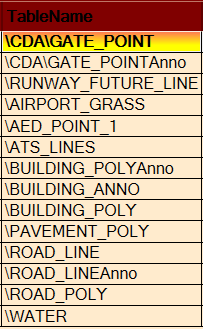MapSuite Team,
The below code returns a null value for the projection string.
TheFileGeoDatabaseFeatureLayer = new FileGeoDatabaseFeatureLayer(TheFilePath, TheTableName, "OBJECTID");
TheFileGeoDatabaseFeatureLayer.Open();
TheProj4Projection = TheFileGeoDatabaseFeatureLayer.GetInternalProj4ProjectionParametersString();
Opening up some of the files of the GeoDatabase using notepad I can actually see the projection string.
The following code also returns a null:
Projection TheProjection = TheFileGeoDatabaseFeatureLayer.FeatureSource.Projection;
I am using ThinkGeo.MapSuite.Layers.FileGeoDatabase.11.0.0-beta009
The data has been uploaded to my ThinkGeo drive space at: home/Chicago_Data/GeoFileDatabase/Airport
Thanks,
Dennis


